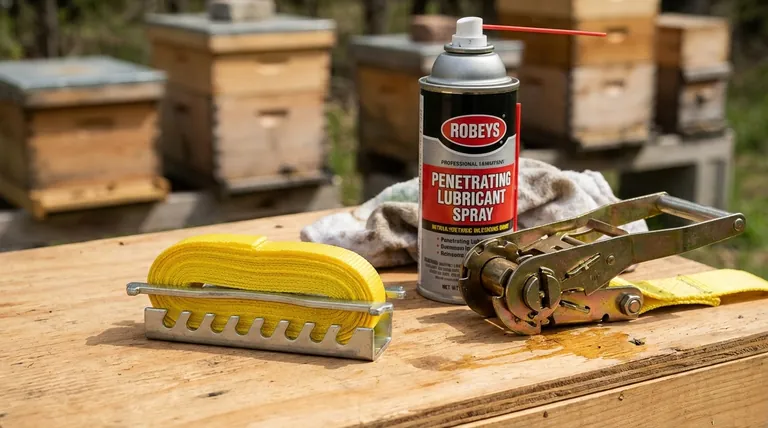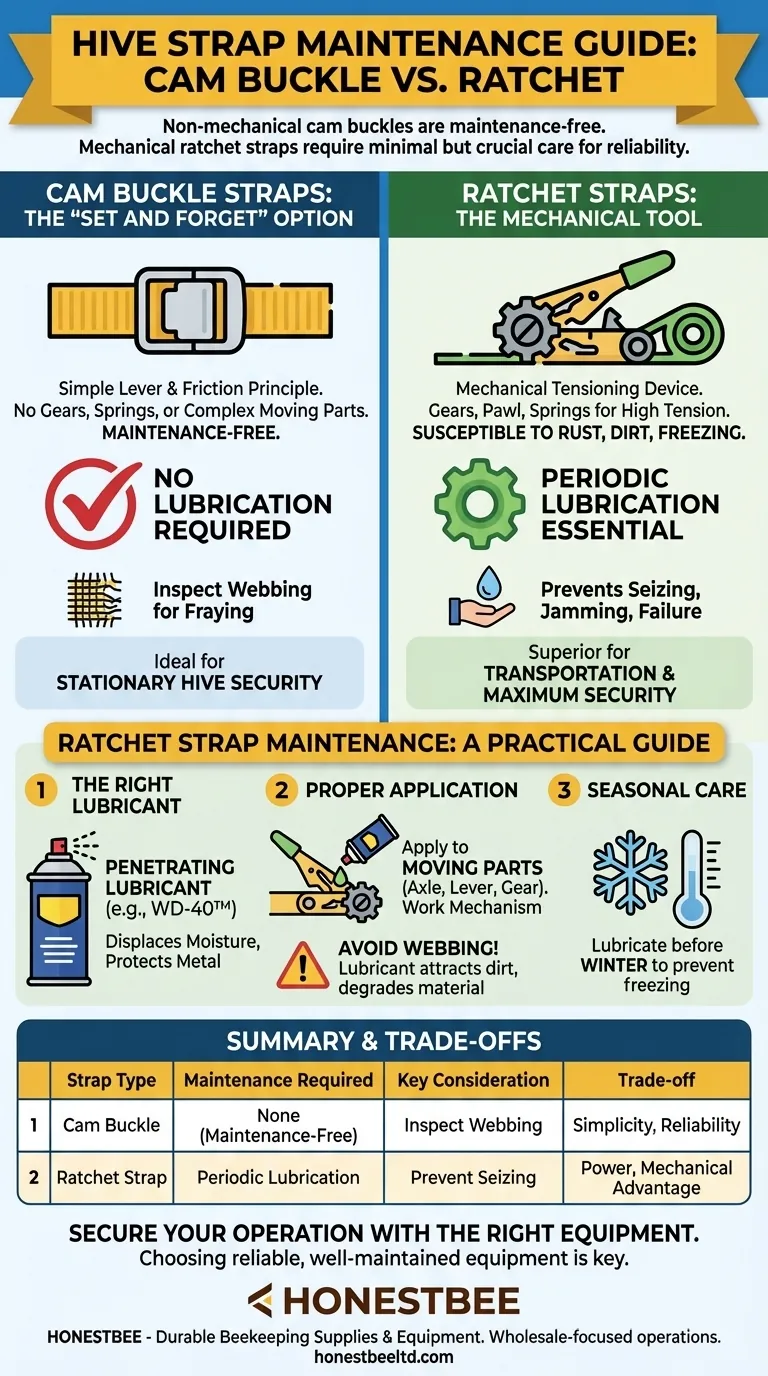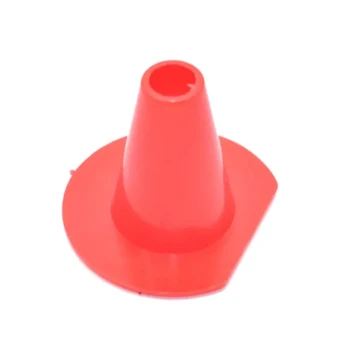The maintenance required for hive straps depends entirely on the type of mechanism you are using. For simple cam buckle straps, no maintenance is required. For the more complex ratchet straps, periodic lubrication of the mechanical parts is essential to ensure they function correctly and do not seize up.
The core principle is simple: non-mechanical cam buckles are maintenance-free, while mechanical ratchet straps require minimal but crucial care to preserve their reliability and prevent failure in the field.

The Two Types of Hive Straps: A Maintenance Overview
Understanding the fundamental design of each strap type reveals why their maintenance needs are so different. One is a simple tool based on friction; the other is a mechanical device.
Cam Buckle Straps: The "Set and Forget" Option
Cam buckle straps operate on a simple lever and friction principle. There are no gears, springs, or complex moving parts that can corrode or seize.
This straightforward design means they require no lubrication or mechanical maintenance. A simple inspection for fraying on the webbing is all that is ever needed.
Ratchet Straps: The Mechanical Tool
Ratchet straps are mechanical tensioning devices. They use a system of gears, a pawl (latching mechanism), and springs to apply and hold significant tension.
Like any mechanical tool, these moving parts are susceptible to rust, dirt, and freezing. This is why they demand a simple, proactive maintenance routine to ensure they work when you need them.
A Practical Guide to Ratchet Strap Maintenance
Properly caring for a ratchet strap takes only a moment but can prevent significant frustration. The goal is to keep the mechanism clean, lubricated, and moving freely.
The Right Lubricant for the Job
Use a high-quality penetrating lubricant, such as WD-40™ or a similar product. These lubricants are designed to displace moisture and protect metal parts from corrosion.
Proper Application Technique
Apply the lubricant directly to all moving parts of the ratchet mechanism, including the axle, release lever, and gear.
Work the mechanism back and forth several times to distribute the lubricant evenly.
Crucially, avoid spraying the fabric webbing of the strap. Lubricant can attract dirt to the fibers and may degrade the material over time.
The Importance of Seasonal Care
A quick application of lubricant before winter is highly recommended. This helps prevent moisture from getting into the mechanism and freezing, which can render the strap useless until it thaws.
Understanding the Trade-offs
Choosing between strap types involves a trade-off between simplicity and tensioning power. Your maintenance commitment is part of that decision.
Simplicity vs. Power
Cam buckles offer ultimate simplicity and reliability with zero maintenance. However, they are limited by the amount of tension you can apply by hand.
Ratchet straps provide superior mechanical advantage, allowing you to secure hives with far greater force. This power comes with the minor responsibility of occasional lubrication.
The Risk of Neglect
A neglected ratchet strap is a liability. Rust and grime can cause the mechanism to seize, jam, or fail to release, which can be a major issue when you are trying to open a hive or unload equipment. A well-maintained strap is a reliable tool; a neglected one is a potential problem.
Making the Right Choice for Your Goal
Select your hive strap based on its intended use and your willingness to perform basic upkeep.
- If your primary focus is stationary hive security: A cam buckle is the ideal, maintenance-free choice for securing hives against wind or pests in the apiary.
- If your primary focus is transportation or maximum security: A ratchet strap is superior, provided you commit to the simple lubrication routine to ensure its reliability.
Ultimately, choosing and maintaining the right equipment is a fundamental part of effective beekeeping.
Summary Table:
| Strap Type | Maintenance Required | Key Consideration |
|---|---|---|
| Cam Buckle | None (Maintenance-Free) | Inspect webbing for fraying. Ideal for stationary hive security. |
| Ratchet Strap | Periodic Lubrication | Lubricate moving parts to prevent seizing. Essential for transport/maximum security. |
Secure Your Operation with the Right Equipment
Choosing reliable, well-maintained equipment is key to successful beekeeping. At HONESTBEE, we supply durable beekeeping supplies and equipment—including hive straps—to commercial apiaries and distributors through our wholesale-focused operations.
Let us help you equip your business with the best tools for the job. Contact our team today to discuss your wholesale needs and ensure your apiary's security and efficiency.
Visual Guide

Related Products
- Professional Galvanized Hive Strap with Secure Locking Buckle for Beekeeping
- Professional Engraved Round Hive Number Tags for Beekeeping
- Modern Flat-Mount Hive Number Set for Beekeeping
- Removable Washable Hive Beetle Trap Attractants for Small Hive Beetles
- Black Plastic Beetle Barn Hive Beetle Trap for Beehives
People Also Ask
- Why are hive straps important for beekeepers? Secure Your Hives Against Wind, Predators & Transport
- How should a cam buckle strap be installed for optimal performance? Master the Leverage for Maximum Tension
- How can beekeepers secure the top cover of a hive? Protect Your Colony from Wind and Weather
- What is the best length for straps used around beehives? Why 12 Feet is the Industry Standard
- What are the two styles of hive straps? Choose the Right Strap for Your Hive Security



















